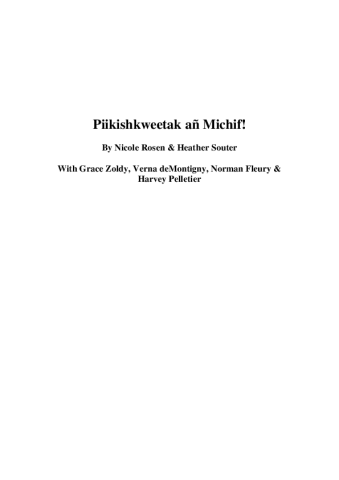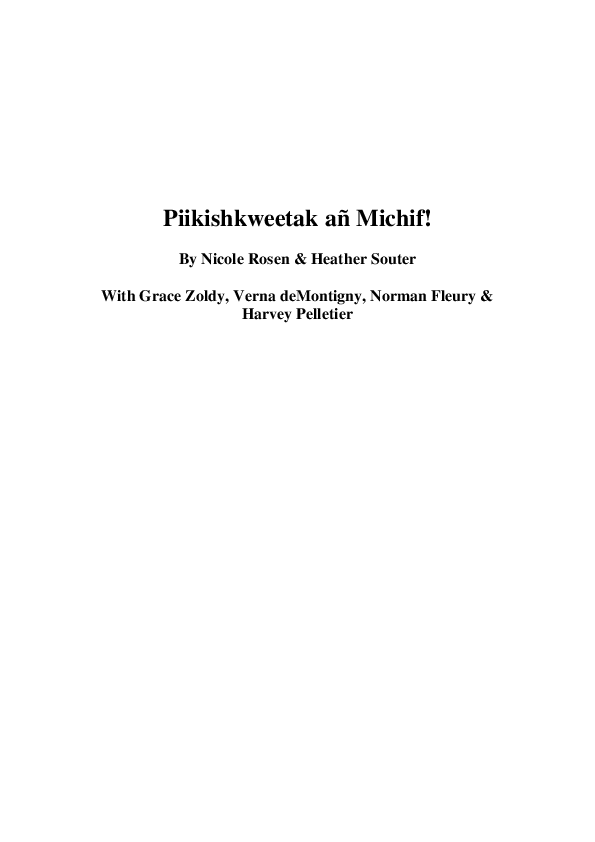Piikishkweetak añ Michif!
The goal of this text is to support an adult Michif language course for people with English as their main language. It does not presuppose any knowledge of any other language, and is meant to be taught over twelve weeks, with each chapter taking a week to complete. Of course, students (and teachers) may move more quickly or more slowly through the chapters if they prefer. At the end of this course, students will have a grasp of many of the basic concepts of the language and be able to communicate in simple sentences in a finite number of contexts. It is a good introduction to the language for anyone planning on doing a Master-Apprentice program with Michif elders, but should not be considered the final word on the language by any stretch of the imagination. The best place to learn Michif is orally, alongside the Michif Elders; this manual is an attempt to support students who find written word helpful and who do not have daily access to Elders, so that they may have another reference to help them with their studies.
The Métis language called Michif in this text is, like the people, a blend of Cree, Ojibwe and French, with a little English thrown in. As you can imagine, languages can get blended in different ways depending on the people involved. Like languages everywhere, different communities speak somewhat differently. Sometimes these differences are small, and sometimes they are more significant. This means that there are different ways of speaking Michif today. When learning the language in the home and the community, people learn to understand the differences and see them as a feature of a certain community‘s speech, as Michif Elders always have. Unfortunately, when any language is written down in a course format like this one, it is impossible to show all the unique parts of the language. One of the roles of the teacher is to make the language dynamic and exciting, instead of something written on a page. Our hope is that this manual will be a starting point for teachers to use as a resource, but that these teachers will augment the pages here with their deeper knowledge and understanding of the language, truly teaching the Michif language.
The text has been organized in the following way: at the beginning of every chapter there is a Michif dialogue, which introduces students to the topic, grammatical structures and vocabulary which will be covered in that chapter. Each dialogue is followed by a vocabulary list to help understand the dialogues. Then there is a grammar section, where students will find the new grammatical points to be learned in that chapter. Each chapter also has a number of exercises under the heading "Piikishkweetaak añ Michif" to get students speaking in Michif. At the end of each chapter, there is a list of vocabulary items relevant to the chapter topic.
This text has been primarily designed by amateurs of Michif as opposed to actual Michif speakers, though speakers were of course consulted along the entire process and were an integral part of the final product. That said, any errors are solely the authors‘, and we would appreciate feedback on any such errors in order to improve further editions.
The text of the Michif prayer in chapter 10 is thanks to George Fleury, and we would like to acknowledge his work. We would also like to acknowledge The Language Menu for most of the pictures you will find in the text. Permission to adapt the maps in chapter 9 has been granted by Earthday Canada, for which we are very grateful.


